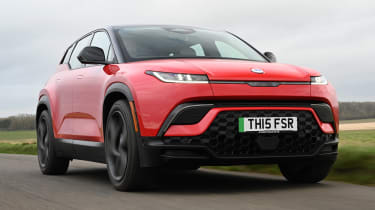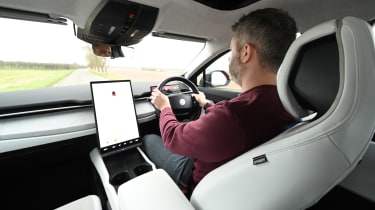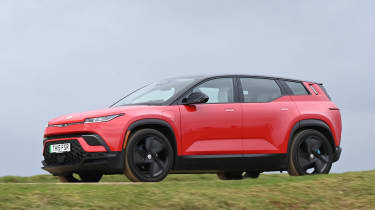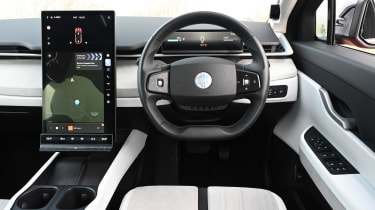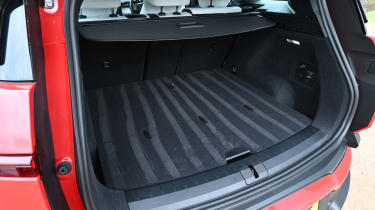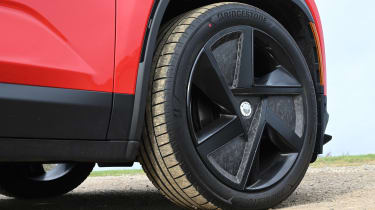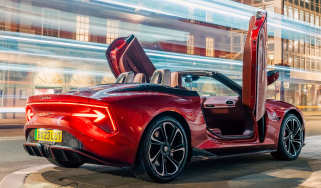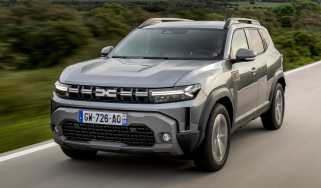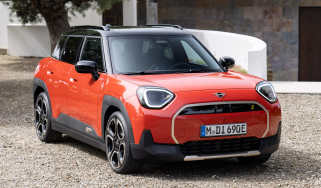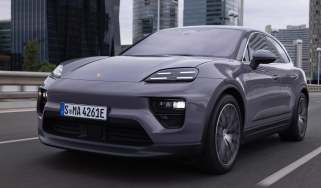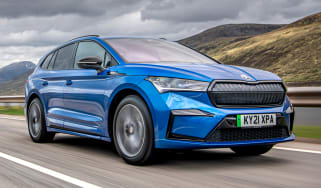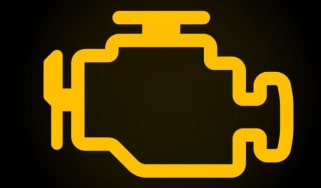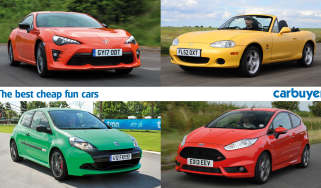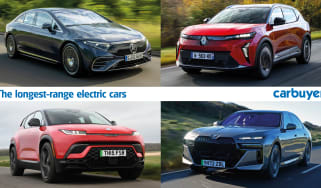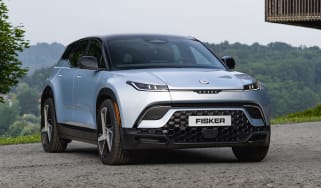Fisker Ocean review – mid-size electric SUV with quirky features
“Fisker is back, with an eco-friendly electric SUV that appeals to both the heart and the head”
Pros
- Long range
- Innovative interior
- In-car technology
Cons
- Firm ride
- Unknown reliability
- Lower real-world efficiency
Verdict – is the Fisker Ocean a good car?
The Fisker Ocean is one of those cars designed to slip seamlessly into your everyday life. It’s been crafted with thought; features like the innovative ‘California Mode’, the clever infotainment system and practical seating setup, all feel like they’ve been built not by boffins, but by people who live with and experience these cars day-to-day. The long range will be the knockout headline, but there’s so much more to like about the Fisker Ocean electric SUV. It’s just a shame some of the basics aren’t quite right at launch, while reliability is still a grey area for now.
Fisker Ocean models, specs and alternatives
The Fisker Ocean is not to be confused with the short-lived Fisker Karma – a plug-in hybrid saloon car built in small numbers between 2007 and 2012 by Fisker Automotive. While that model could reasonably be considered a bit of a flop, company founder Henrik Fisker has his sights set much higher for the next car; a Tesla Model Y-rivalling electric SUV produced by his new brand, Fisker Inc.
On sale now, the Fisker Ocean will eventually come with a choice of batteries and specs Thus far, we’ve only driven the flagship Ocean Extreme, with the bigger 106kWh (usable) battery – good for a lengthy 440 miles between charges. With a peak charging speed of 180kW, it’s good for a 10-80% top-up in around 33 minutes. A smaller ‘Touring Range’ battery and single-motor version will be able to travel around 288 miles between charging.
At almost 4.8 metres long, the Fisker Ocean is roughly the same size as the aforementioned Tesla Model Y, and similarly proportioned to German rivals like the BMW iX3 and Mercedes EQC. Prices for the Fisker officially start from around £37k – less than the Tesla, and almost half the price of the other two. Even in reduced-range (80kWh) Sport guise, the Ocean’s range should be competitive enough in this area of the market.
 Top 10 best electric SUVs 2024
Top 10 best electric SUVs 2024
At almost 4.8 metres long, the Fisker Ocean is roughly the same size as the aforementioned Tesla Model Y, and similarly proportioned to German rivals like the BMW iX3 and Mercedes EQC. Prices for the Fisker officially start from just £35,970 – less than the Tesla, and almost half the price of the other two. Even in reduced-range (80kWh) Sport guise, the Ocean’s 273-mile maximum (still TBC) is competitive enough in this area of the market.
Despite the low list price, those entry-level Sport models get a generous level of standard kit. These single-motor models are front-wheel drive and come with a panoramic roof, 17.1-inch central touchscreen, a premium stereo and vegan-friendly interior. There’s a set of 20-inch wheels, a rear-view monitor and a long list of safety features, too.
Step up to the Fisker Ocean Ultra (from £51k) and you get a second motor for all-wheel drive, plus the bigger battery for a claimed 440 miles of range. In addition, these cars get an opening roof and ‘California Mode’ – a one-touch feature that lowers all the windows (including the roof and rear screen) for a Jeep Wrangler-style open-air feeling. Ultra cars get specific interior trim, too.
Sitting atop the range is the only version we’ve driven thus far: the flagship Ocean Extreme. Priced identically to the limited edition Ocean One launch edition, the Extreme gets a Boost mode for extra performance, 360-degree 3D cameras, plus additional safety kit – some of which will be added via an over-the-air (OTA) update in due course. These cars also get a rotating function for the touchscreen, plus a more powerful stereo.
As it stands, the Ocean is Fisker’s only model, though the smaller, even more affordable Fisker Pear is just around the corner. A pickup truck is also planned, alongside a Fisker-badged sports car in time.
|
Trim levels |
Power options |
|
|
Fisker Ocean alternatives
It’s difficult to pinpoint the Fisker Ocean’s direct rivals. At almost 4.8 metres long and just over 2.1 metres wide it’s a similar size to a BMW iX3 and Mercedes EQC. But with prices around £37,000 it’s priced on par with much smaller cars like the Honda e:Ny1 and Volkswagen ID.3. Arguably, the Tesla Model Y is the Fisker’s closest competitor – not dissimilar price-wise, the two cars are roughly the same size.
Range, charging & running costs
Straight out of the blocks, the Fisker Ocean takes its place as one of the longest-range electric cars on sale, posting an impressive 440-mile claimed maximum.
This is thanks to a large 106kWh battery fitted in both the Extreme and Ultra models. While we’ve only driven the former so far, on paper, it’s the Ultra that strikes the best balance of range versus price, with this mid-spec version coming in at around £50,000.
Sport models get a smaller 71kWh battery and single motor, but the 288-mile figure puts the Ocean on par with other cars of this size and weight; a Mercedes EQC will officially return 254 miles with a similarly-sized battery.
During our time with an Extreme trim on British roads in winter, we saw up to 2.5 miles/kWh efficiency during testing, however, which would result in a range figure of less than 300 miles, rather than over 400.
The Fisker absolutely trounces the Merc when it comes to charging speeds, though. The Ocean Extreme will charge at up to 180kW – far quicker than the EQC’s circa-110kW maximum. That means the Fisker can top up its massive 106kWh battery from 10-80% in 33 minutes. Its sheer size means that slower charging at home via a 7kW wallbox takes between 18-19 hours, mind.
A big part of any electric car’s appeal is the low tax rates – both for private and company car buyers. The Fisker Ocean is exempt from road tax (VED) until 2025, and once registered, you won’t need to pay the London Congestion Charge either. Business users will be liable for just 2% Benefit-in-Kind (BiK) – higher rate taxpayers could pay less than £500 per year.
|
Model |
Battery size |
Range |
|
Fisker Ocean Sport |
80kWh |
273 miles (est) |
|
Fisker Ocean Ultra |
106kWh |
379 miles (est) |
|
Fisker Ocean Extreme |
106kWh |
440 miles |
Insurance
Insurance groups for the Fisker Ocean could be a stumbling block for some drivers, because most versions sit in group 50 – the highest rating available. Only the entry-level Sport is in a lower band, which is still a lofty group 43. This isn’t unheard of for electric SUVs, and a look at rivals doesn’t paint a pretty picture. Both the Tesla Model Y and Mercedes EQC sit in some of the very highest insurance groups.
Electric motor, drive & performance
Big, powerful, electric SUVs can hide a multitude of sins thanks to their prodigious performance. Plentiful power and instant throttle response make all these cars feel fast – even the relatively sedate 282bhp BMW iX3 is quick off the mark.
And yet so many of these cars suffer on the scales. They’re inherently heavy, which affects the way they can tackle a challenging stretch of road. The Fisker Ocean is no different; body control is fine, but the steering doesn’t offer much feel and the brakes aren’t as sharp as we’d like. We found the seats weren’t supportive enough either, which means you get thrown around a bit during faster cornering.
Its ride quality is pretty firm, but while it can struggle to filter out poor surfaces and potholes more than a BMW iX3, it’s still quite a bit softer than a Polestar 2. It’s not helped by the massive 22-inch alloy wheels which were fitted to our test model, so we suspect the standard 20-inch wheels would work better on pockmarked British roads.
All in, then, the Fisker is best enjoyed at a more relaxed pace. There are various drive settings, with the Ocean defaulting to its eco-friendly ‘Earth’ mode each time you get in. We liked this setup, not least because it preserves as much of the car’s range as possible. Fisker is still updating the car’s software, with one-pedal driving set to arrive in the near future. Once added and selected by the driver, this will see the car decelerate and put energy back into the battery when you lift off the accelerator, making urban driving easier and potentially more efficient.
0-62mph and top speed
So far, we’ve only driven the Fisker Ocean Extreme, with the biggest ‘Hyper Range’ battery and the most powerful Dual-Motor powertrain. With 550bhp on tap it certainly isn’t slow; Fisker claims 0-60mph in 3.6 seconds, or 0-62mph (100kmh) in 3.9 seconds. As discussed, it isn’t necessarily the sharpest electric SUV to drive, but what it lacks in finesse, it more than makes up for with straight-line speed. Top speed is limited to 128mph.
The Ocean Ultra misses out on the Extreme’s ‘Boost’ function and is a little slower to 60mph. Despite this, we expect the Ocean Sport will be the pick of the range – especially for those who tend to cover shorter distances on a daily basis. This version only gets an electric motor for the front wheels, but with 271bhp it will still accelerate from 0-60mph in a reasonable 6.9 seconds – still challenging modern hot hatchbacks away from the lights.
|
Model |
Power |
0-60mph |
Top speed |
|
Ocean Sport |
275bhp |
6.9s |
TBC |
|
Ocean Ultra |
536bhp |
3.9s |
TBC |
|
Ocean Extreme |
550bhp |
3.6s |
128mph |
Electric motor, drive & performance
The Fisker Ocean is an eye-catching SUV both inside and out. Its boxy proportions give it plenty of road presence, only helped by its flared arches and large alloy wheels. Trick features like the top-spec car’s ‘California Mode’, which lowers all the windows and sunroof at the touch of a button, only add to its appeal. This feels like an EV that has been thoughtfully designed from the outset, epitomised by the ‘Taco Tray’ airline-style table that folds out of the centre console for your lunch, laptop or tablet while you are parked up at a public charger.
Inside, all cars get a huge 17.1-inch screen (more on that below) plus a range of sustainable materials; the Ocean gets a vegan-friendly seat fabric, and leather isn’t even an option. Quality is okay at the entry-level price, but when you reach the heights of the Extreme trim, the cheap-feeling door handles and buttons fail to impress in the same way as some more expensive German rivals.
The air vents are hidden within the dash and operated via that huge display, though not everything is relegated to frustrating touch-sensitive controls. There’s a row of buttons giving access to things like the media volume and temperature settings, as well as a shortcut for the windscreen demister. Again, the layout is well-considered, with ergonomics at its core.
Infotainment and navigation
As mentioned, every car comes with a 17.1-inch infotainment screen, which on top-spec models rotates for a so-called ‘Hollywood Mode’ – allowing you to watch movies in landscape while you wait for the car to charge. Even without this feature though, the display is crisp and responsive, though we didn’t get to try Apple CarPlay or Android Auto – this is set to arrive via an over-the-air (OTA) update later. The sat-nav comes from TomTom so should feature reliable mapping, but doesn’t feel quite as cutting-edge as some other aspects of the car.
General usability is good regardless, with thoughtful touches like how the navigation widget is always visible – no matter what other features you’re cycling through. The menus seem easy enough to operate, which is handy given how many assistance systems there are to select (or de-select). You can even ask Fisker Intelligent Pilot to do some of the driving for you.
Key features | ||
|
Sport
|
Ultra (Sport plus…)
|
Extreme (Ultra plus…)
|
Practicality & boot space
The five-seat Fisker Ocean is roughly the same size as a Tesla Model Y, and it feels pretty spacious inside, but we wish there was a touch more adjustability for the driver’s seat. We’ve mentioned several times how this feels like a car designed with its users at the fore, and this is especially evident in the back. There’s the usual flat floor, for example, but Fisker has also raised the centre console so that there’s space for middle-seat occupants to slide their feet forward. Might sound insignificant, but it could prove really useful if you regularly drive fully loaded.
If travelling five-up is a rarity, then you’ll be able to fold down the central armrest to reveal buttons for the climate control, as well as a couple of USB sockets. There’s an additional two wireless charging pads up front, as well as a pull-out tray in place of a conventional glovebox – perfect, Fisker claims, for the front-seat passenger to do some work, or watch a movie.
Ultra and Extreme models come with a one-touch ‘California Mode’ which lowers all of the side windows, as well as the rear screen. It’ll open the sunroof too, for a true open-air feel similar almost to a Jeep Wrangler. Fun to use, but a bit of a novelty in grey and rainy Britain.
|
Size comparison | |||
|
Model |
Length |
Width |
Height |
|
Fisker Ocean |
4,774mm |
1,982mm |
1,629mm |
|
Tesla Model Y |
4,775mm |
1,921mm |
1,624mm |
|
Mercedes EQC |
4,762mm |
1,884mm |
1,624mm |
|
BMW iX3 |
4,734mm |
1,891mm |
1,668mm |
Boot space
Straight off the bat, it’s worth noting that Fisker’s on-paper boot space figures don’t necessarily translate to what you’ll find in real life. The 476-litre load bay is a little shy of its main rivals – and appears considerably smaller than the Tesla Model Y’s 971-litre boot (which is measured to the roof) – but in use it feels more than capable of swallowing the family luggage for a weekend away.
But here’s where things get particularly confusing; with the rear seats folded, Fisker publicises a figure of 32.43 cu ft – roughly 918 litres. That’s because Fisker only measures up to the windows, while rivals take figures right to the roof. Ignoring the numbers, the Fisker feels as if it would be plenty practical enough for most family buyers.
|
Boot space comparison | |
|
Model |
Boot space |
|
Fisker Ocean |
476 litres |
|
Tesla Model Y |
971 litres |
|
Mercedes EQC |
500 litres |
|
BMW iX3 |
510 litres |
Reliability & safety
Fisker is a brand that has completely reinvented itself since it stopped selling the plug-in hybrid Karma saloon back in 2012. It’s a maker on a mission to deliver reliable, eco-conscious electric vehicles with lots of range and plenty of family-friendly features. We’d expect customer satisfaction to be pretty high on CEO Henrik Fisker’s list of priorities, too, though we’ll have to wait a little longer to see how things progress.
One concern potential owners might have is with regards to service. For now, the only places to see, experience and even buy a Fisker Ocean in the UK is at a store in Westfield shopping centre in west London, Manchester or Milton Keynes – though in time these locations will multiply. Servicing will be arranged via the Fisker app.
Safety
The Fisker Ocean hasn’t yet been tested by Euro NCAP, but given the long list of safety kit, it’s all but assured to get a good score when the time comes.Every version – even the entry-level £37k Ocean Sport – comes with the Fisker Intelligent Pilot system, which includes autonomous emergency braking, blind-spot monitoring, lane-keep assist, traffic-sign recognition and intelligent speed assist, among other bits and bobs. Extra features like emergency lane departure avoidance, automatic high beam and front cross-traffic collision mitigation will be available at a later date, most likely via OTA software updates.
